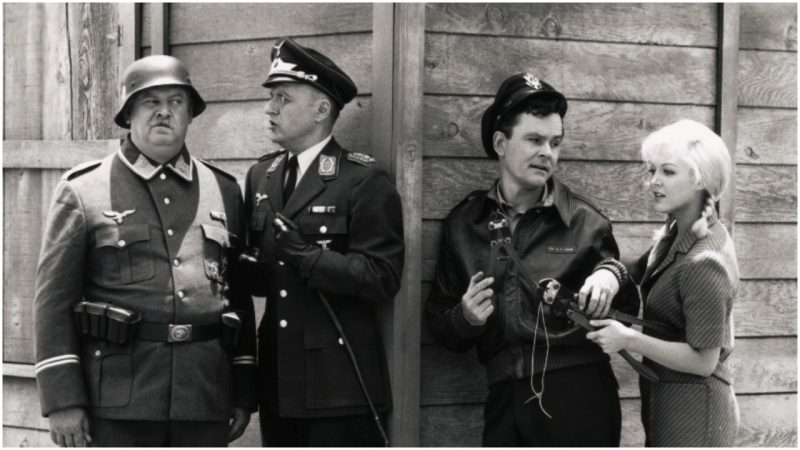Hogan’s Heroes was a highly successful American comedy series that ran from 1965 to 1971.
It followed the fictitious adventures of a special operations group led by Colonel Robert E. Hogan who supposedly secretly operated out of an incompetently run German POW (Prisoner of War) Camp.
Unlike the films about POWs of that era such as The Bridge on the River Kwai (1957) and The Great Escape (1963), Hogan’s Heroes was played purely for laughs.
But it was a big budget production and did appear to make some attempt to ensure the details were authentic or, at least, believable.
So, putting aside the comedic aspects of the show, how much of the overall detail of the time period and life in a POW camp did they get right?
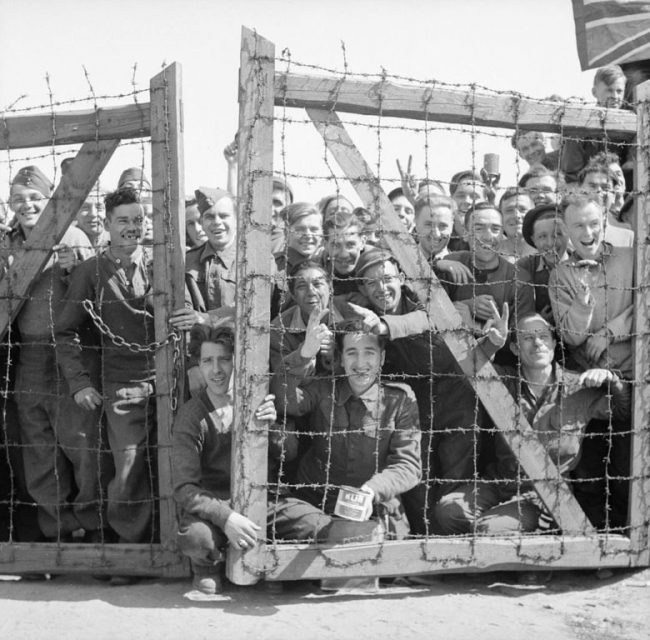
Timeline
At the very start of the series, it declares on-screen that the program is set in Germany in 1942.
The United States Army Air Forces (USAAF) started to arrive in Britain in mid-1942. But for the remainder of that year, the USAAF only carried out a few limited raids on mainland Europe.
It was not until the Allied Combined Operations plan was put into action in early 1943 that the American bombing raids started in earnest.
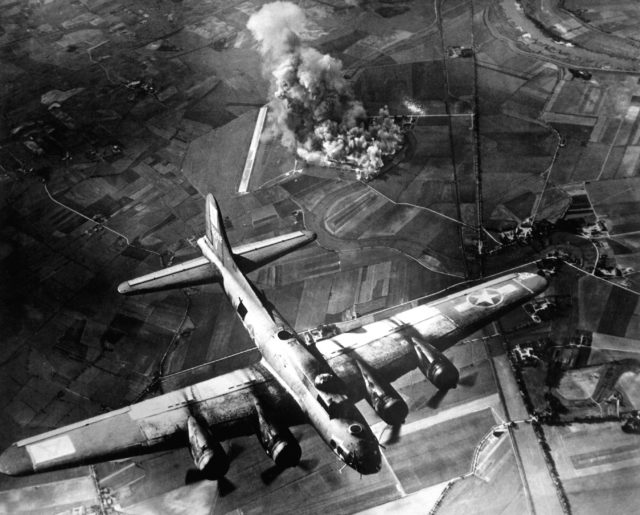
So it is possible that Colonel Hogan and his fellow American airman could have been captured while on active duty in the later half of 1942. But they would have been very unlucky. It’s also likely they would have had virtually no combat experience.
While the 1942 start date is plausible, from this point onward Hogan’s Heroes seemed to have a very muddled timeline.
For example, in Series 2, Episode 4 “Operation Briefcase,” the prisoners are involved in assisting with Operation Valkyrie, the attempted assassination of Adolf Hitler.
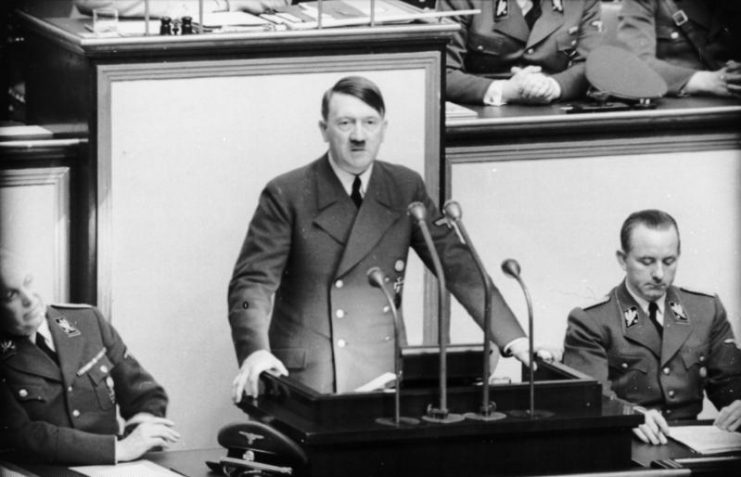
This would date the episode to just before July 20th, 1944. Consequently, during the first 36 episodes of the show, time had moved forward about two years.
However, a further three series later in Series 5, Episode 12 “The Antique,” the prisoners mention the upcoming D-day landing. In reality, that occurred on June 6th, 1944. This suggests that in the 94 episodes since “Operation Briefcase,” the timeline hasn’t moved forward at all but has, in fact, gone back in time one month!
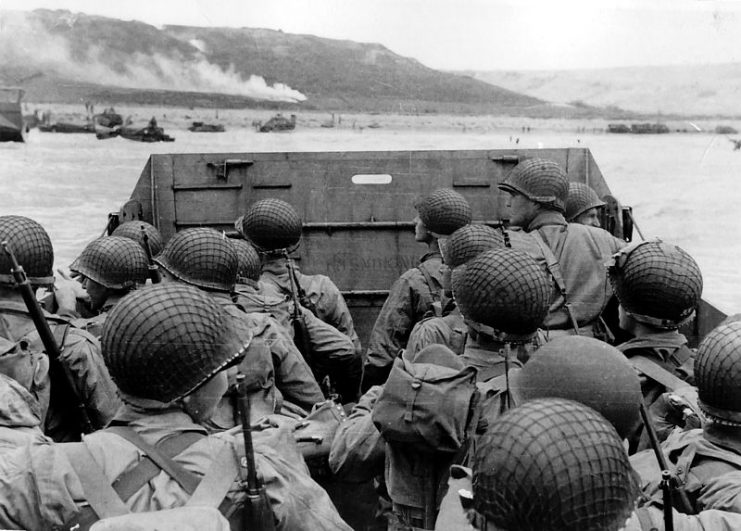
Finally, in the last of the show’s 168 episodes, we find out it is now early 1945. So, it has taken another 74 episodes and 16 months (in reality) for the timeline in the show to progress nine more months.
It is also worth noting that the TV series ran for six years, whereas the Americans involvement in the war in Europe lasted only three years.
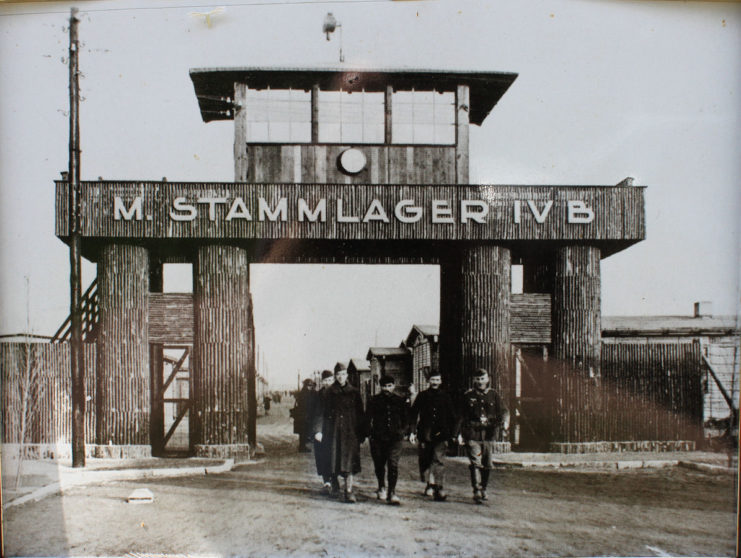
The Camp itself
The show’s fictitious prison camp, Stalag 13, was said to be a Luftwaffe-run POW camp for captured Western Allied Air Force personnel. This would have been the correct protocol at the time.
We know that the prison camp is in Germany, but its location seems to move around as the show progresses. For instance, the distance from the camp to the North sea and various German city changes throughout the show’s 168 episodes.
At first glance, the camp’s barren structure and bleak surroundings look realistic. The feel was right, but the details were far from being correct.
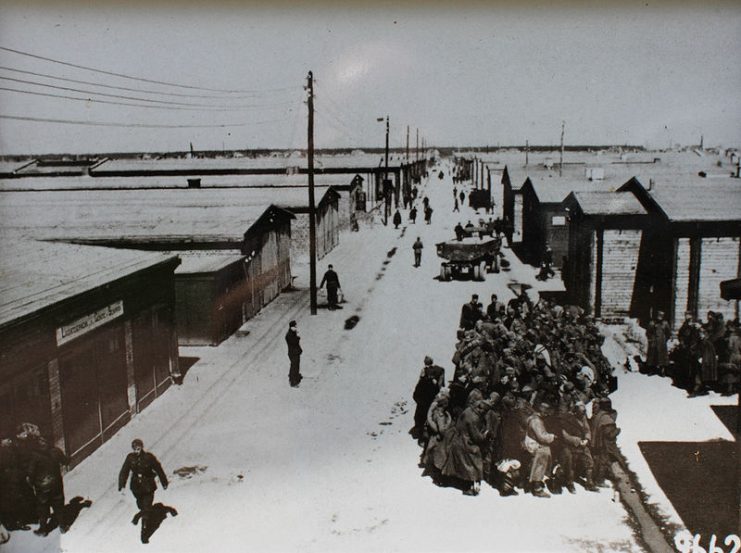
These are some of the glaring errors:
- Allied officers would have been housed separately from the enlisted men.
- POWs of different nationalities would have been barracked separately.
- The camp’s inside fence line would have been a strict “No Go” area.
- Extending for over 100 feet (30 meters) from the outside fence line would be a zone cleared of all trees, bushes, and foliage.
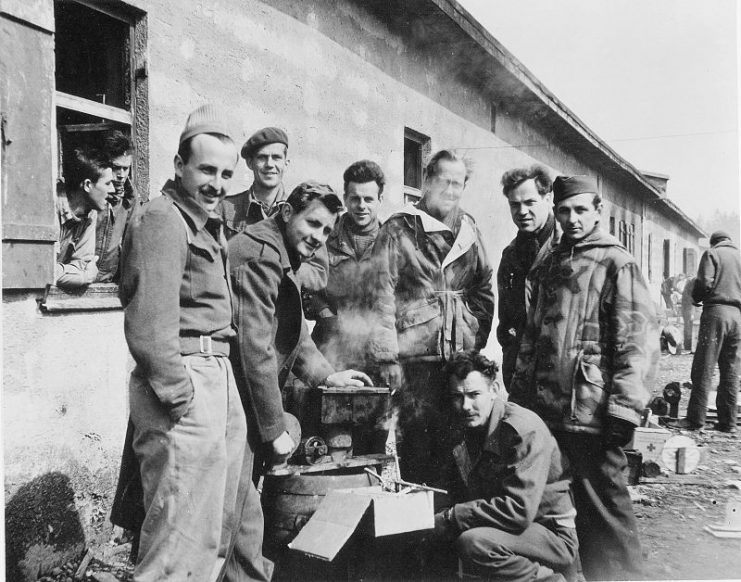
- The POWs were highly unlikely to have had a secret barbers shop, steam room, industrial complex, a network of spy periscopes across the camp, or a phone tap hidden in a coffee pot.
- Neither would they have had a permanent network of tunnels leading to the outside world, the Cooler (solitary confinement), or a well-equipped communication cavern.
- Often seen around the camp was the Nazi Germany flag. Sometimes it was correct while at other times it was missing the imperial cross on the top left-hand side. Also, the Swastika was not slanted and was in the wrong place: it should have been off center to the left, not dead center.
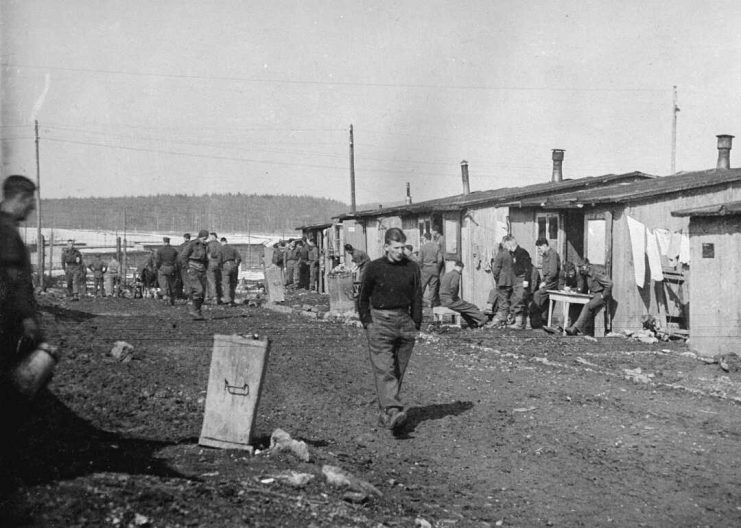
The Equipment
The guards are shown using a mixture of rifles and submachine guns. The standard German rifle of the period was the Karabiner 98k, but throughout the show’s run they used the old US Army bolt loading rifle, the M1903 Springfield.
As for the submachine guns used, they were the MP 40 “Schmeisser,” which is correct for the period. However, these guns were often carried or fired incorrectly in the show.
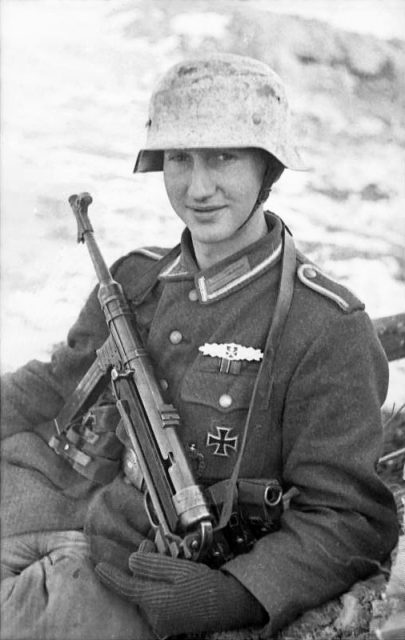
The guards would grip the magazine, not the hand-grip just below the barrel. Doing this in reality would cause the gun to jam on occasions, as the magazine being tightly gripped affected the ammunition feed.
As for the German officers, they were often seen carrying P-38 Walthers or Luger pistols, both standard issues for the period.
The prisoners and the resistance used almost exclusively the Colt M1911A1 semi-automatic pistol in the show. Putting aside how prisoners might get their hands on such weaponry, it is the kind of firearm the resistance and special covert operations would use.
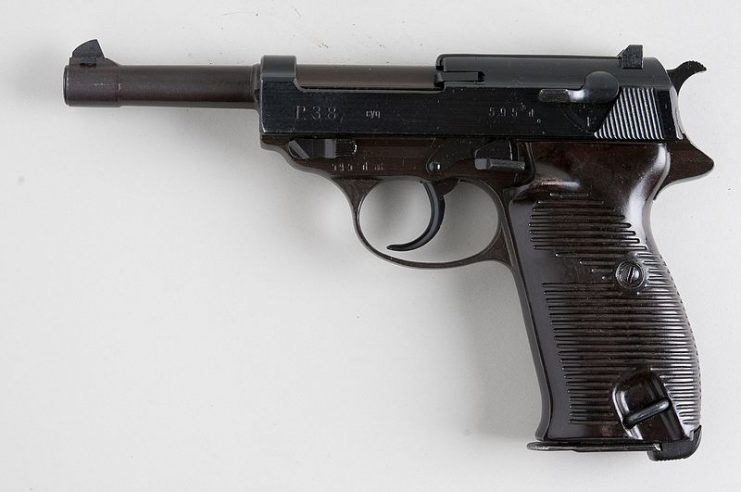
In Series 1, Episode 2 “Hold That Tiger,” a US M7 Priest self-propelled artillery vehicle was used to portray a German Tiger heavy tank. One could not think of a worse choice.
The Priest shares nothing in common with the German Tiger tank. It is open top and has no turret. It is very square and an extremely high-sided vehicle, the complete opposite to the Tiger.
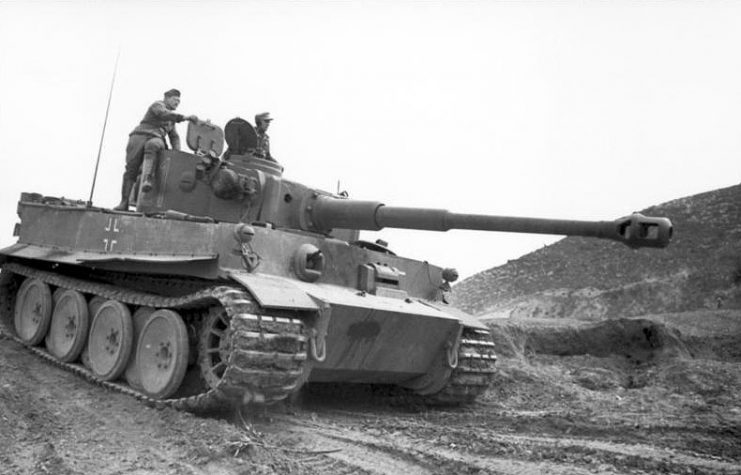
The only thing they could be said to share in common with each other is they are both very large fighting vehicles.
As for the support vehicles, the trucks used continually throughout the series were completely wrong, being US World War Two GMC 6X6 trucks.
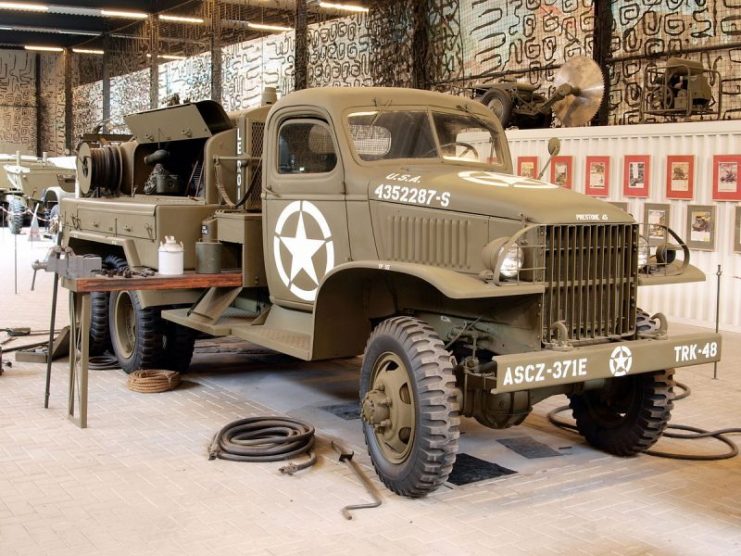
In relation to the staff cars, they seemed to be of the correct type. The vehicle used most was the authentic World War Two Sd.Kfz.21 Mercedes 64 or a very similar model. This staff car was typically employed by very important officers such as generals.
There were obviously understandable budget constraints. This is clear in the very last episode where the mock-up of the V-2 was nowhere near as big as it should be.
In real life, a V-2 would have been 45 feet (13 meters), whereas the one portrayed in the show could have been no more than 12 to 15 feet (3.5-4.5 meters).
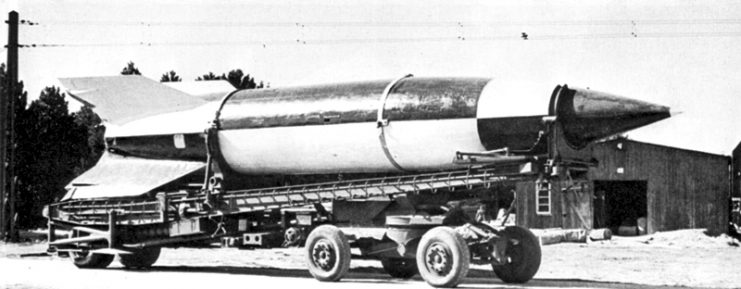
The Uniforms
The German guards wear the correct helmets. On the one side is the marking of the Luftwaffe (an outstretch eagle on top of a swastika), and on the other side is the Reich battle flag (black/white/red).
This was called a “double decal” type of arrangement and was phased out in 1940 for camouflage reasons. But it was not uncommon for secondary units to continue wearing such markings up until the end of the war.
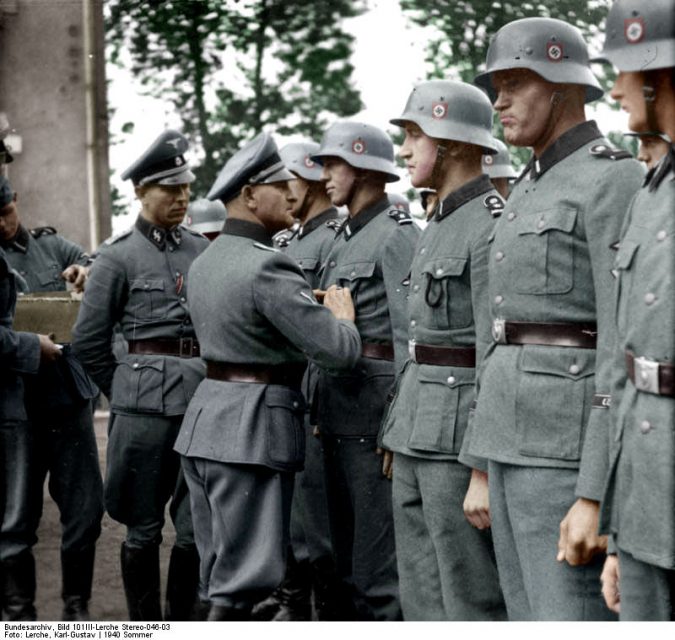
Those characters often referred to throughout the show as “the Gestapo” were really more of a stereotype of the Waffen SS.
They had Nazi armbands, black with silver thread uniforms, and double lightning emblems on their lapels. However, they had the wrong markings on their helmets, and the officers lacked the skull and crossbones motif on their caps.
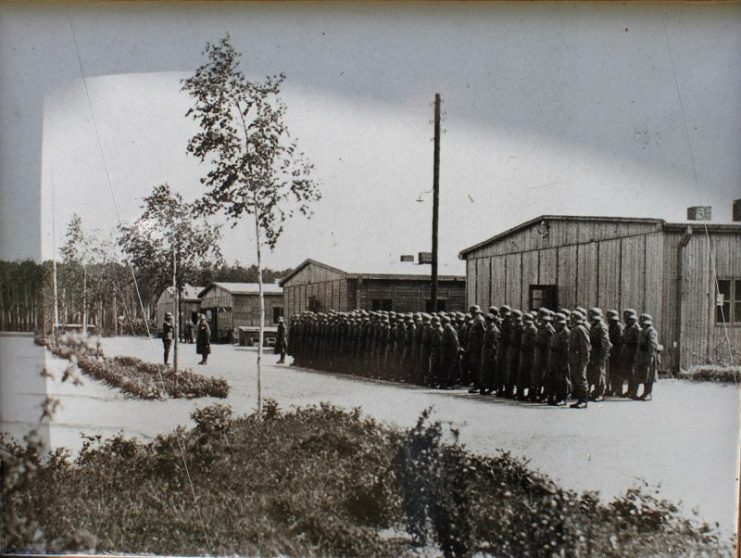
The reality of Gestapo clothing was much more complicated. The Gestapo was the Nazi State Secret Police and, it would hardly have been a secret organization if its members marched around everywhere in a uniform.
However, this did start to change a bit from 1939 when Gestapo officers who also held SS ranks began to wear the wartime grey SS uniform while on duty at the Gestapo main offices.
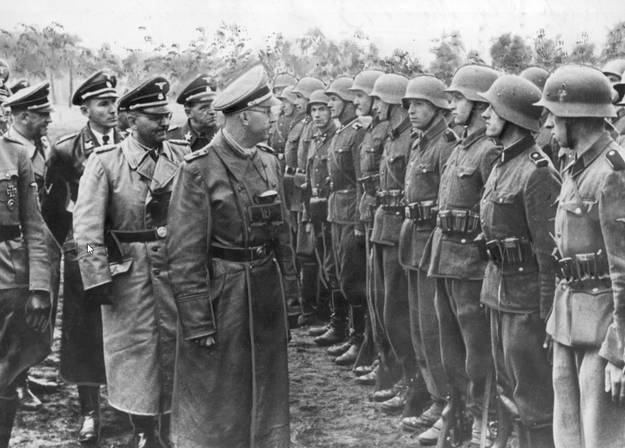
The following year, grey SS uniform began to be worn by Gestapo agents in occupied countries in the East. This was the case even with those Gestapo members who were not actually SS members, as the need for secrecy diminished as the situation in these countries slowly deteriorated.
So, the fact that Stalag 13 was based in Germany meant that any uniform worn by the Gestapo in the field was incorrect. Even if they had been wearing uniform, their clothes would have been grey not black.
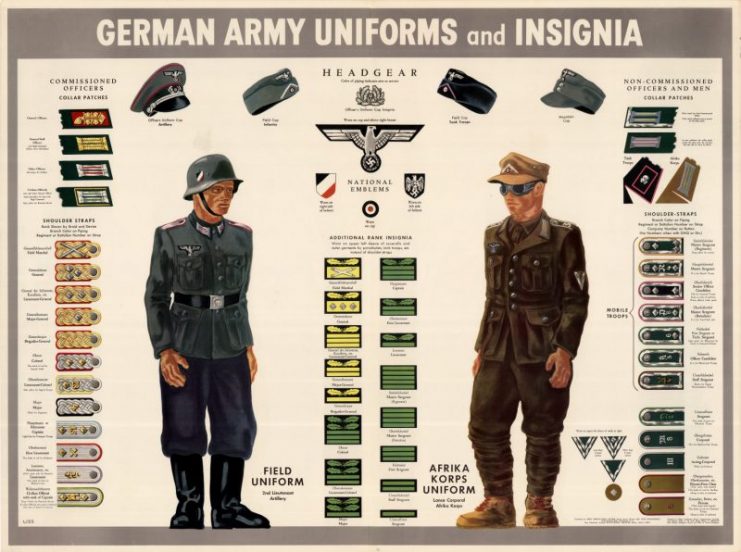
As for the prisoners’ uniforms, they were in far too good a condition, especially towards the end when they had been continually worn for three years. But putting that aside, the uniforms were generally correct for the rank and service.
The insignia on most of the uniforms had small details that were incorrect, but as a representation, they gave the overall effect of the stereotype they were trying to convey.
The German generals had their Knight Crosses, and the Allied airmen generally had the right uniform. For example, Sergeant Carter wearing a B2 leather flight cap is correct for what a sergeant in a US bomber crew might wear at the time.
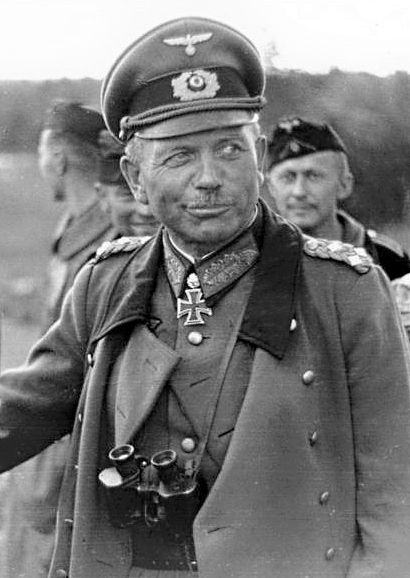
What is worrying, though, is that the prisoners and the resistance seemed to have no hesitation in impersonating German soldiers by putting on their enemy’s uniform.
This was, in fact, an incredibly risky thing to do. In reality, POWs would rarely do this because, if they were caught, they would almost certainly be executed.
The General Details
The mention of events such as the siege of Stalingrad, or people like General De Gaulle and Rita Hayworth were used in the right historical context.
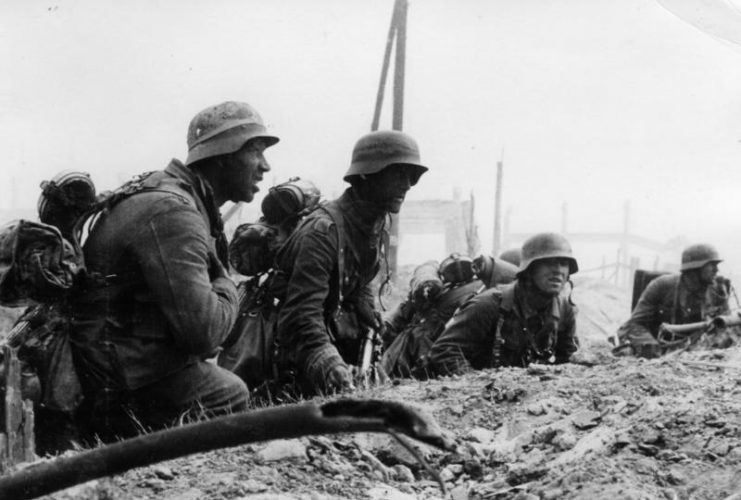
But on occasion, the show would get small details wrong, such as mentioning the cartoon character Speedy Gonzales, who did not appear until 1953.
Another small error occurred when Colonel Hogan warned Sergeant Carter that he was holding poison ivy. This would not have been possible as poison ivy only occurs in Asia and Eastern North America, not Europe.
Also, the units the Americans were supposed to belong to like the 182nd or 151st did not match up.
Furthermore, the prisoners’ hair was always far too perfect, and they were far more nourished and well-shaven than a POW would have been.
On a final note, you might be wondering about the closing and opening credits which showed Colonel Hogan’s officer’s cap draped over a pre-1916 German Pickelhaube.
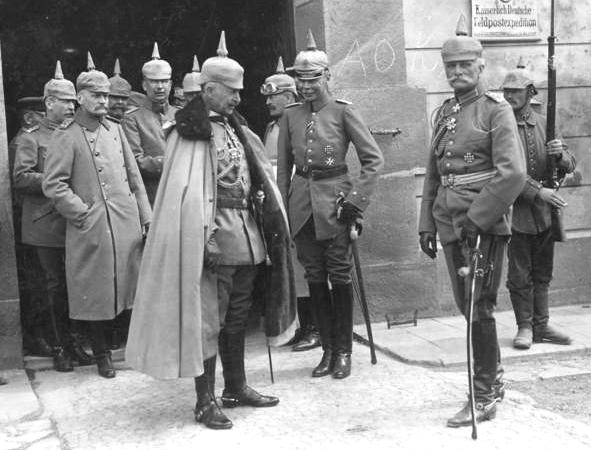
This may seem at first glance to be totally inaccurate, but in an early episode, the helmet is an ornament on the camp Commandant’s desk. One could assume it was a family memento, maybe his father’s or grandfather’s.
Read another story from us: How Allied POWs Survived German Camps in WWII
The Conclusion
There is no question that Hogan’s Heroes does not live up to the attention to detail of a series like Band of Brothers. But it nevertheless did try to make an effort to give some kind of realism befitting both the era and the POW setting.
